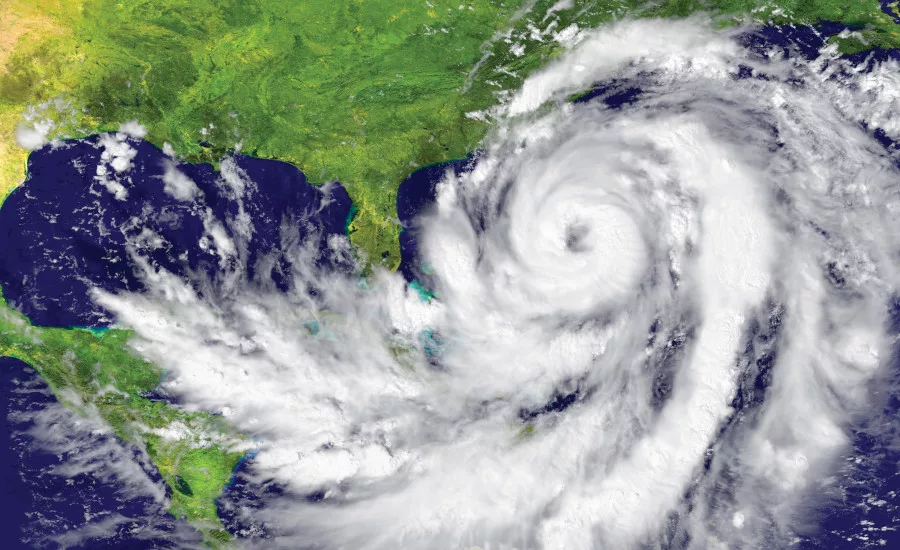Web Exclusive
Second 2019 CSU hurricane forecast released June 4
First forecast: ‘Don’t let a weak El Niño fool you’

The first hurricane prediction for 2019 was less alarming than many prior years, with only two major hurricanes forecast to hit the U.S. coast. Hurricane researchers at Colorado State University announced in April they foresee a slightly below-average Atlantic hurricane season, citing a weak El Niño and a slightly cooler tropical Atlantic ocean as major contributors. Their second, often more accurate forecast is due June 4, and NOAA announces its first forecast of the hurricane season on May 23.
But don’t be fooled. Early predictions in 2017 also pointed to a slightly below-average Atlantic hurricane season, but in that year hurricanes Harvey, Irma and Maria slammed into the Atlantic and Gulf coasts as well as Puerto Rico and became three of the five costliest hurricanes in U.S. history.
Each storm is different and unpredictable which means business and property owners shouldn’t become complacent; it’s extremely important to prepare in advance for major hurricanes. According to the Federal Emergency Management Agency (FEMA), 40 percent of businesses do not reopen after a disaster and another 25 percent fail within one year. Preplanning is important because it will streamline operations during and after a storm, lead to a quicker recovery and potentially lower insurance claims costs.
According to an April 10 webinar hosted by Dr. Phil Klotzbach of the Department of Atmospheric Science at CSU, researchers are predicting 13 named storms during the 2019 Atlantic hurricane season, with two becoming major hurricanes. (In comparison, in 2018, CSU predicted 14 named storms with three reaching major hurricane strength.) Historical data, combined with atmospheric research, points to the U.S. East Coast and Florida Peninsula with about a 28 percent chance of getting hit by a major hurricane (average for the last century is 31 percent). The Gulf Coast, from the Florida panhandle westward to Brownsville, Texas, is forecast to have a 28 percent chance (average for the last century is 30 percent). The Caribbean has a 39 percent, down from the 42 percent average for the last century.
The states with the highest probability to receive sustained hurricane-force winds include Florida (47 percent), Texas (30 percent), Louisiana (28 percent), and North Carolina (26 percent), according to Klotzbach. But hurricanes can cut a wide swath, he says, as Hurricane Michael did in October 2018 as it moved into Georgia, causing high wind damage and gusts as high as 115 mph in the southwest part of the state.
Klotzbach outlined how total dollar losses from Atlantic hurricanes are increasing each year, exacerbated primarily from a doubling of the U.S. population since the 1950s and from larger homes being built, with an average of more than 2,600 square feet. It’s shocking to consider that if a category 4 storm struck Miami today, similar to the one that leveled the city in 1926, it’s estimated it would cost $200 billion to rebuild. That exceeds $160 billion in damage caused by Hurricane Katrina in 2005.
Experienced recovery experts, like those at Interstate Restoration, are skilled at delivering a quick response and delegating teams to react as soon as a storm is named. Once they identify approximately where the storm will land on U.S. soil and assess its intensity, they allocate assets, resources, and equipment as needed and keep in close contact with all clients in the path of the storm. Staging efforts to a safe area begin many days before the event.
Powerful hurricanes, such as Irma, can disrupt businesses for weeks or months, which is why pre-planning is so important. It starts with hiring a disaster response company in advance. By establishing a long term partnership before a disaster happens, business and property owners can ensure they are on the priority list for getting repairs done quickly. The restoration partner can also assist with performing a pre-loss property assessment, recovery planning and working closely with insurance.
Quick recovery is made more difficult when business and property owners neglect proper preparations. So despite the prediction calling for fewer storms expected in 2019, it’s always better to be prepared as Mother Nature can be destructive.
Looking for a reprint of this article?
From high-res PDFs to custom plaques, order your copy today!


